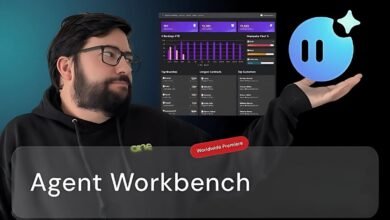Cohere’s New Vision Model Outperforms Top VLMs with Just 2 GPUs

▼ Summary
– Cohere released Command A Vision, a 112B-parameter visual AI model optimized for enterprise use cases like analyzing diagrams, charts, and PDFs.
– The model combines vision and language capabilities, supporting OCR, image analysis, and multilingual text understanding while requiring minimal GPU resources.
– Command A Vision outperformed competitors like GPT 4.1 and Llama 4 Maverick in benchmark tests, scoring 83.1% on tasks like ChartQA and TextVQA.
– Built on a Llava-inspired architecture, the model processes images as soft vision tokens and was trained in three stages, including reinforcement learning with human feedback.
– Cohere offers Command A Vision as an open-weights system, targeting enterprises seeking alternatives to closed AI models, with early positive feedback from developers.
Cohere’s latest AI innovation is making waves with its ability to process visual data efficiently while requiring minimal hardware resources. The company’s newly launched Command A Vision model stands out by delivering high-performance visual analysis tailored specifically for enterprise needs. Built on the foundation of its Command A text model, this 112 billion parameter system excels at extracting insights from complex documents, including charts, diagrams, and scanned PDFs, common formats businesses rely on daily.
What sets Command A Vision apart is its resource efficiency. Unlike many competing models that demand extensive GPU clusters, this solution operates smoothly on just two GPUs, significantly lowering infrastructure costs for organizations. Beyond image processing, it retains robust multilingual text capabilities, supporting at least 23 languages for OCR and contextual understanding.
The model’s architecture follows a Llava-based design, converting visual elements into tokens that integrate seamlessly with Command A’s text-processing framework. Training occurred in three phases: vision-language alignment, supervised fine-tuning, and reinforcement learning with human feedback. This meticulous approach ensures precise mapping between visual inputs and language model outputs, enabling accurate interpretation of intricate enterprise documents.
In benchmark comparisons, Command A Vision surpassed rivals like GPT-4.1, Llama 4 Maverick, and Mistral’s models across multiple tests, including ChartQA and TextVQA, achieving an average score of 83.1%. Its strength lies in handling unstructured data, a persistent challenge for businesses drowning in manuals, reports, and graphical content.
Another advantage is open-weight availability, appealing to enterprises wary of proprietary systems. Early feedback highlights its proficiency in deciphering handwritten notes and technical diagrams, suggesting strong potential for automating tedious document workflows.
As enterprises increasingly adopt AI-driven deep research tools, solutions like Command A Vision could redefine how organizations extract value from their visual data, without the heavy computational overhead of traditional models.
(Source: VentureBeat)





